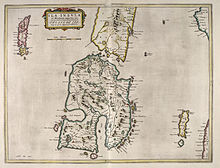
In his Martin Martin’s 1703 Account of the Western Isles of Scotland, describes a custom on the island Lingay:
“the natives are much addicted to riding, the plainness of the country disposing both men and horses to it. They observe an anniversary cavalcade on Michaelmas Day, and then all ranks of both sexes appear on horseback. The place for this rendezvous is a large piece of firm sandy ground on the sea-shore, and there they have horse racing for small prizes for which they contend eagerly. There is an ancient custom by which it is lawful for any of the inhabitants to steal his neighbour’s horse the night before the race and ride him all next day, provided he delivers him safe and sound to the owner after the race.”
The race sounds particularly challenging for:
“The manner of running is by a few young men who use neither saddles nor bridles, except small ropes made of bent instead of a bridle, nor any sort of spurs but their bare heels; and when they begin the race, they throw these ropes on their horses’ necks, and drive them on vigorously, with a piece of long sea-ware in each hand instead of a whip, and this is dried in the sun several months before for that purpose. This is a happy opportunity for the vulgar, who have few occasions for meeting except on Sundays; the men have their sweethearts behind them on horseback and give and receive mutual presents: the men present the women with knives and purses, the women present the men with a pair of fine garters of divers colours; they give them likewise a quantity of wild carrots.”
When the custom demised is unclear. There are many horses still on the island but the human population has slowly declined which may have meant the death knell of the custom.
